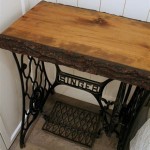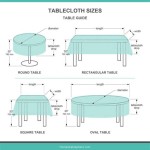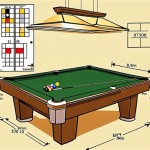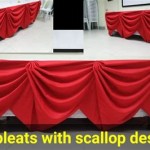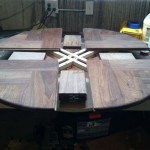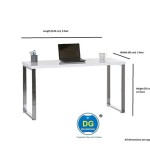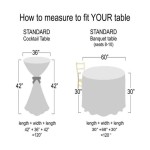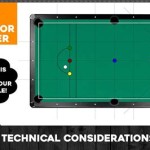Types of Round Dining Tables
Round dining tables offer a unique aesthetic and functional advantage compared to their rectangular or square counterparts. Their circular shape promotes conversation, creates a more intimate dining experience, and often fits better in smaller spaces. The absence of sharp corners also contributes to safety, especially in households with young children. Round dining tables are available in a range of materials, sizes, and styles, catering to diverse design preferences and practical needs. This article explores various types of round dining tables, categorizing them based on key features and materials.
Classifying Round Dining Tables by Base Style
The base of a round dining table significantly influences its overall stability, visual appeal, and the amount of legroom available. Different base styles offer distinct aesthetic qualities and structural advantages.
Pedestal Base: Pedestal bases are a popular choice for round dining tables. They typically consist of a single, central support column that flares out into a wider base for stability. This design maximizes legroom, as there are no legs at the corners to obstruct chairs. Pedestal bases can be crafted from various materials, including wood, metal, stone, and acrylic. Wooden pedestals often feature intricate carvings or turnings, adding a touch of traditional elegance. Metal pedestals, on the other hand, tend to have a more modern or industrial aesthetic. Depending on the design, pedestal bases can range from simple, minimalist forms to elaborate, sculptural statements.
Four-Legged Base: Round dining tables with four legs offer a classic and stable design. The legs are typically positioned around the perimeter of the table, providing balanced support. The style of the legs can vary widely, ranging from straight, tapered legs to curved, cabriole legs. The leg design significantly impacts the overall aesthetic of the table. For example, slender, tapered legs contribute to a mid-century modern look, while ornate, carved legs evoke a more traditional or antique feel. Placement of the legs is crucial; legs positioned too close to the edge can restrict legroom, while legs positioned too far inward may compromise stability, particularly for larger tables.
Trestle Base: Trestle bases consist of two or more vertical supports connected by a horizontal beam called a stretcher. This type of base is often associated with rustic or farmhouse-style dining tables. The trestle design provides a sturdy and visually interesting support system. The trestles can be made from wood, metal, or a combination of both. Wooden trestles are often left exposed, showcasing the natural grain and texture of the wood. Metal trestles can add an industrial edge to the table. While trestle bases can be visually appealing, they may slightly limit legroom compared to pedestal bases, especially if the stretchers are positioned low to the ground.
Spider Base: Spider bases feature multiple legs that splay outwards from a central point, resembling a spider's legs. This design provides exceptional stability and a modern, sculptural look. Spider bases are often made from metal, such as steel or iron, and can be finished in a variety of colors or polished to a high shine. The spider base design is well-suited for contemporary dining spaces, adding a touch of architectural interest. Similar to four-legged base tables, spider bases can impact legroom depending on the angle and spread of the legs.
Material Composition of Round Dining Tables
The materials used to construct a round dining table influence not only its appearance but also its durability, maintenance requirements, and overall cost. Common materials include wood, glass, metal, stone, and various composite materials.
Wood: Wood is a classic and versatile material for dining tables. It offers a warm, natural aesthetic and can be stained or painted to match a variety of decor styles. Different types of wood possess varying levels of hardness, durability, and grain patterns. Hardwoods, such as oak, maple, and cherry, are highly durable and resistant to scratches and dents. Softwoods, such as pine and fir, are more affordable but also more susceptible to damage. Solid wood tables are generally more expensive and require more care than tables made from wood veneers or engineered wood. However, solid wood offers a timeless quality and can be refinished multiple times, extending its lifespan. Wood veneer tables consist of a thin layer of real wood adhered to a core of engineered wood. This construction method allows for more intricate designs and can be more stable than solid wood, as it is less prone to warping or cracking. Engineered wood, such as MDF or plywood, is a cost-effective option that can be finished to resemble real wood. However, it is generally less durable than solid wood or wood veneer.
Glass: Glass-topped round dining tables offer a sleek and modern aesthetic. Glass tabletops can be clear, frosted, or tinted, and can be tempered for added strength and safety. Glass tables are easy to clean and maintain, and they allow light to pass through, making the dining area feel more open and spacious. The base of a glass-topped table is typically made from metal, wood, or acrylic. The transparency of the glass allows the base to become a focal point, showcasing its design and material. While glass is durable, it is susceptible to scratches and can shatter if subjected to extreme impact. Tempered glass is a safer option, as it breaks into small, blunt pieces rather than sharp shards.
Metal: Metal dining tables offer a contemporary and industrial aesthetic. Metal tabletops can be made from steel, iron, aluminum, or stainless steel. Metal tables are highly durable and resistant to scratches, dents, and heat. They are also relatively easy to clean and maintain. Metal tables can be finished in a variety of colors and textures, from polished chrome to matte black. The base of a metal table is typically made from the same material as the tabletop, creating a cohesive and unified look. Metal tables can be heavier than tables made from other materials, making them less portable.
Stone: Stone dining tables offer a luxurious and elegant aesthetic. Stone tabletops can be made from marble, granite, slate, or travertine. Stone tables are incredibly durable and resistant to heat, scratches, and stains. However, they are also very heavy and can be expensive. Stone tables require regular sealing to protect them from moisture and stains. The base of a stone table is typically made from wood or metal, providing a sturdy and stable support system. The natural variations in color and pattern of stone make each table unique.
Composite Materials: Composite materials, such as laminate, resin, and acrylic, offer a variety of options for round dining tables. Laminate tables are made by bonding a decorative layer of plastic to a core of engineered wood. Laminate is a cost-effective and durable material that is resistant to scratches, stains, and heat. Resin tables are made by pouring liquid resin into a mold. Resin can be tinted or embedded with decorative objects, creating unique and artistic designs. Acrylic tables are made from a durable and transparent plastic material. Acrylic tables are lightweight and easy to clean, and they offer a modern and minimalist aesthetic.
Size and Capacity Considerations for Round Dining Tables
Selecting the appropriate size of a round dining table is crucial for ensuring comfortable seating and adequate space for serving food. The table's diameter directly correlates with the number of people it can comfortably accommodate.
Small Round Tables (36-48 inches): Small round tables, with diameters ranging from 36 to 48 inches, are ideal for small spaces and intimate dining settings. These tables typically seat two to four people comfortably. They are well-suited for apartments, breakfast nooks, or dining areas where space is limited. A 36-inch table is best suited for two people, while a 48-inch table can comfortably accommodate four.
Medium Round Tables (48-60 inches): Medium-sized round tables, with diameters ranging from 48 to 60 inches, offer a balance between space-saving and seating capacity. These tables can comfortably seat four to six people. They are a versatile option for families or individuals who occasionally entertain guests. A 54-inch table provides a comfortable seating arrangement for five people, while a 60-inch table can accommodate six.
Large Round Tables (60-72 inches): Large round tables, with diameters ranging from 60 to 72 inches, are ideal for larger dining rooms and formal dining settings. These tables can comfortably seat six to eight people. They provide ample space for serving food and allow for a more formal and spacious dining experience. A 72-inch table can comfortably seat eight people, providing ample elbow room. It’s important to consider the size of the room when selecting a large round table, ensuring that there is sufficient space for chairs to be pulled out and for people to move around the table comfortably.
Extending Round Tables: Extending round tables offer the flexibility to adjust the table's size to accommodate varying numbers of guests. These tables typically have a leaf or leaves that can be inserted to increase the table's diameter. When not extended, the table functions as a smaller, more intimate dining space. When extended, it can accommodate a larger group. Extending round tables are a practical solution for those who occasionally host larger gatherings but prefer a smaller table for everyday use. The extension mechanism can vary, with some tables featuring a butterfly leaf that folds out from the center, while others have leaves that are stored separately and need to be manually inserted.

51 Round Dining Tables That Save On Space But Never Skimp Style

51 Round Dining Tables That Save On Space But Never Skimp Style

Common Dining Room Table Shapes Sizes And Base Types Furniture Showcase

The 7 Best Dining Tables And How To For One Reviews By Wirecutter

51 Round Dining Tables That Save On Space But Never Skimp Style

The Best Dining Table Shapes Castlery United States

Custom Dining Tables Bassett Furniture

15 Extendable Dining Tables Best Extending

The 7 Best Dining Tables And How To For One Reviews By Wirecutter

21 Versatile Round Dining Tables Best Table

